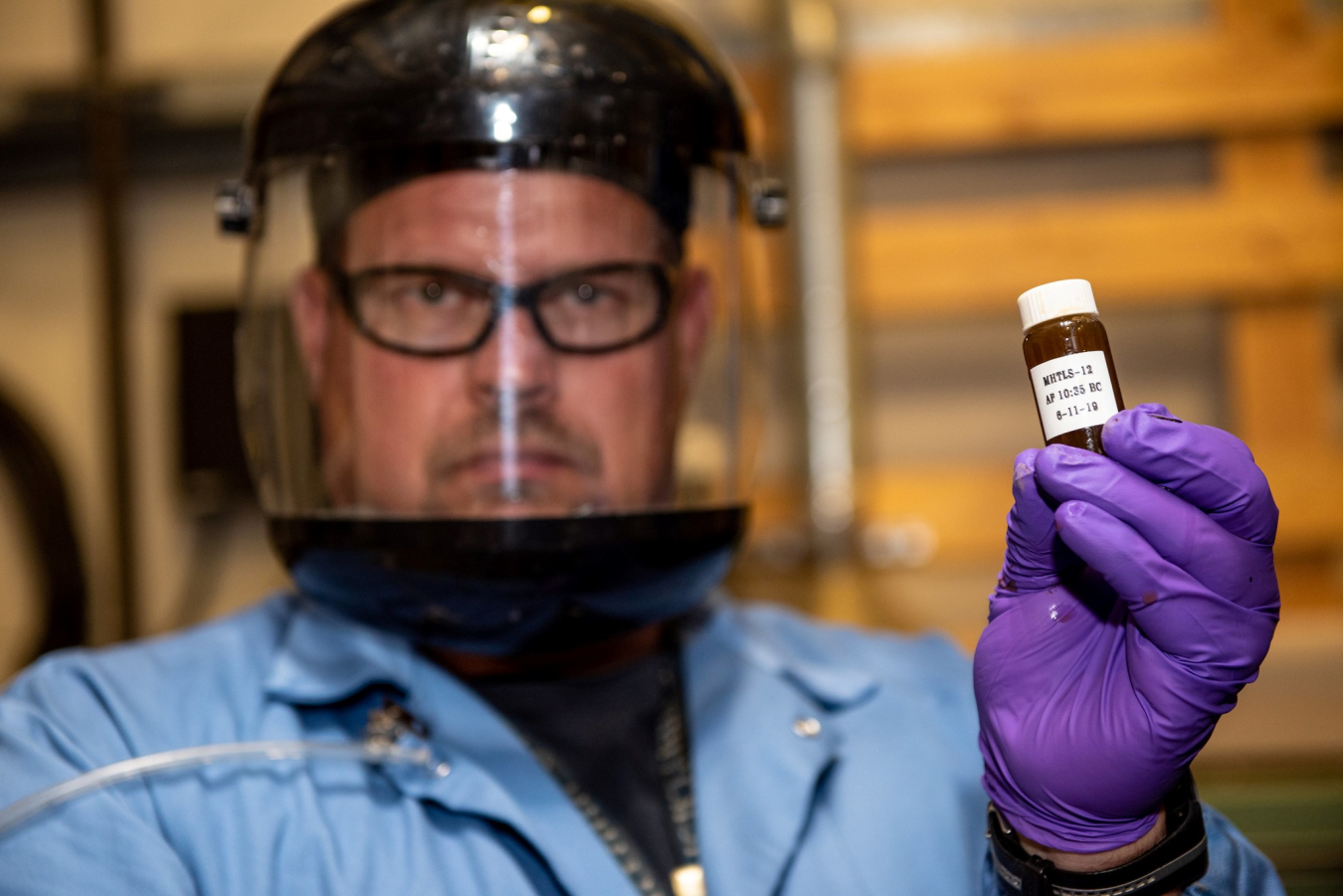Bioprose Blog: Researchers produced 10 liters of biocrude from 200 kg of low-value, wet, plant-based feedstock.
March 4, 2020
Senior Research Chemist in the Energy Processes and Materials Division at Pacific Northwest National Laboratory
BIOPROSE BLOG
Local Brewery’s Spent Grain Fueled the Process
Beermakers use about 400 million tons of grain during the brewing process — converting it to a mass of wet mush that is discarded one way or another. The bulk of it goes to composting or waste, although some breweries sell or give away spent grain as food for cows or pigs.
But the leftover ingredients can do more than supply animal feed. Spent grain is also an attractive feedstock for producing high quality biocrude oil that can be refined into transportation fuel. Pacific Northwest National Laboratory (PNNL) researchers recently achieved a Department of Energy milestone by producing 10 liters of biocrude from 200 kg of low-value, wet, plant-based feedstock.

Spent grain used by a local brewery was processed into biocrude at Pacific Northwest National Laboratory. Photo courtesy of Andrea Starr | Pacific Northwest National Laboratory
The research did not hinge on a specific feedstock, but in order to meet the milestone, it had to be a good one. One of the technical team members is a home brewer with connections to a local brewery. Easy access to the spent grain, along with its beneficial properties and abundance, made it a good wet biomass to test. In the beer making process, carbohydrates and sugars have already been removed, so the remaining or ‘spent’ grain has a higher lipid (or fat) content by weight than it had before brewing. A higher lipid content leads to higher biocrude yields.
The Ice Harbor Brewing Company, in Kennewick, Washington, provided more than 300 kg of the wet grain for the test, consisting almost entirely of American two-row barley used in brewing an American Pale Ale and an India Pale Ale. Researchers first developed a recipe to manage the alkalinity, added water, and blended the spent grain into a slurry that looked a bit like a peanut butter smoothie. The slurry was then pumped into an engineering-scale, modular hydrothermal liquefaction (HTL) system and processed continuously for 25 hours.
From Ale to Oil
The HTL process operates under high heat and pressure in a continuous, tubular reactor. The system performed smoothly during the production run, although PNNL staff optimized the process by adding more heat at a specific point near the end of the processing unit. This alleviated an issue found in some previous tests, in which heavy oils with almost a tar-like consistency would sometimes stick in a valve opening at the end of the piping system.

Product sample collected during the hydrothermal liquefaction processing of 300 kg of wet grain from a brewery in Washington State. Photo courtesy of Andrea Starr | Pacific Northwest National Laboratory
Successful, sustained campaigns like this, and being able to troubleshoot minor issues, are a good indication that industrial partners can scale up systems in the future that will operate smoothly. With 10 liters of biocrude produced, PNNL researchers will be able to upgrade and refine the biocrude in the laboratory. This upgrading process is necessary to convert the biocrude into a stream that is “engine-ready” for a variety of liquid transportation fuels including gasoline, diesel, and jet fuels. Characterizing its quality and properties at this quantity will provide meaningful information to oil refineries, in order to determine whether the biocrude can ‘drop in’ to existing refining infrastructure.
Bioenergy sources like spent brewery grains are beneficial for the environment. Not only do wastes enable ‘re-use’ of carbon already in the environment, in many cases it’s a safe, economical disposal pathway for waste products that could otherwise have a negative impact on the environment.

Spent brewery grains being prepared for processing in the hydrothermal liquefaction system at Pacific Northwest National Laboratory. Photo courtesy of Andrea Starr | Pacific Northwest National Laboratory
The HTL process is an important advancement because it can create oil from wet wastes without requiring the energy expenditure of drying them first. The Bioenergy Technologies Office funding has supported the intellectual and design research for this process. The development process has resulted in specialized equipment designs that allow researchers to obtain useful engineering data.
Researchers are finding that each feedstock is different. Testing reveals new information, which is critical for developing new bio-based waste-energy from a variety of sources. PNNL researchers are excited about this one. It was all-hands-on-deck for the continuous 25-hour test. No word on how they celebrated afterwards, but ‘cheers’ to the team that successfully completed the beer run.
Dr. Asanga Padmaperuma

Dr. Asanga Padmaperuma is a Senior Research Chemist in the Energy Processes and Materials Division at Pacific Northwest National Laboratory. He serves as the Laboratory Relationship Manager for the Department of Energy's Bioenergy Technologies Office, which has oversight of research in sustainable use of marine, terrestrial, and waste biomass for fuels and chemicals via thermal, biological, and electrocatalytic conversion.
Dr. Padmaperuma also serves as the Technical Leader for the Chemical Conversion team in PNNL's Chemical and Biological Processing Group. Prior to his current assignment, his research focus was on thermochemical, low-temperature catalytic, and electrochemical production of value-added chemicals and fuels from bio-based and waste sources. He also conducted research in design and development of functional molecules for organic electronics and liquid scintillators for radiation detection.
Dr. Padmaperuma completed his B.Sc. in Chemistry at the University of Colombo (Sri Lanka) and obtained his Ph.D. in Organic Polymer Chemistry at the University of Southern California's Loker Hydrocarbon Research Institute. He is a named inventor on several granted patents as well as an author of more than 50 journal articles, book chapters, and public technical reports.
Meet our other bloggers ►
Return to Bioprose blog ►

